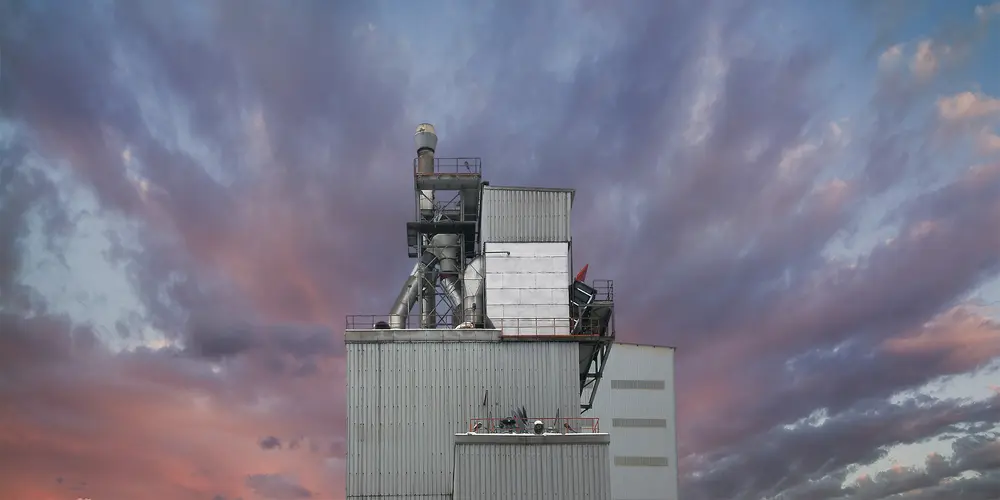Explosion diverters ensure the safety of industrial facilities where combustible dust or gases are handled. These devices are designed for the de-coupling of interconnected sections of systems, e. g. by causing propagating explosion effects (pressure, flames) to exit a system into a safe area before the propagation becomes difficult or impossible to handle safely.
Especially in elongated duct connections, through which explosion effects can propagate and undergo acceleration, explosion diverters can have a useful mitigating effect.
The most common explosion diverter type, and the explosion diverter that will be found in coal handling and grinding systems is the pipe-in-pipe diverter.
For explosion diverters the EN (European Norm) 16020 applies.
How Do Explosion Diverters Work?
Explosion diverters operate on the principle of providing a controlled path for the explosive force. They are normally passive systems that are activated by the explosion pressure in the system. When an explosion occurs within a duct or process system, the diverter opens, allowing the pressure wave and flames to be safely vented. The primary mechanisms involved include:
- Pressure Relief: The diverter provides a low-resistance path for the explosive pressure to escape, preventing excessive build-up (pressure piling) within the system.
- Flame Front Diversion: By directing the flame front as to exit the system, the diverter helps to prevent the propagation of fire to other parts of the protected system.
Design and Installation Considerations
The design and installation of explosion diverters require careful planning and adherence to safety standards. Key considerations include:
- System Configuration: Understanding the layout and flow of materials within the system and the forces that may come from explosion pressure and flame front propagation is crucial for positioning the diverter effectively.
- Recoil Force: The explosion venting function of the explosion diverter will cause a reaction force (recoil force). This force needs to be included in the design of the duct and the diverter’s support or suspension.
- Material Selection: Diverters must be constructed from materials that can withstand the explosive forces and environmental conditions of the specific application.
- Compliance with Standards: Adherence to industry standards, such as those set by the European ATEX Directives and European Norms and in North-America the US-American National Fire Protection Association (NFPA) or the Occupational Safety and Health Administration (OSHA), is mandatory. According to the ATEX Directives and being a protective system, design and manufacturing of explosion diverters have to be certified on the basis of tests.
- Using Self-Reclosing Venting Mechanisms is essential for all situation in which it would be disadvantageous if the protected system remained open to ingress of air (21 % O2) and egress (loss) of emergency inertising media like gaseous CO2 or N2 after having vented.
